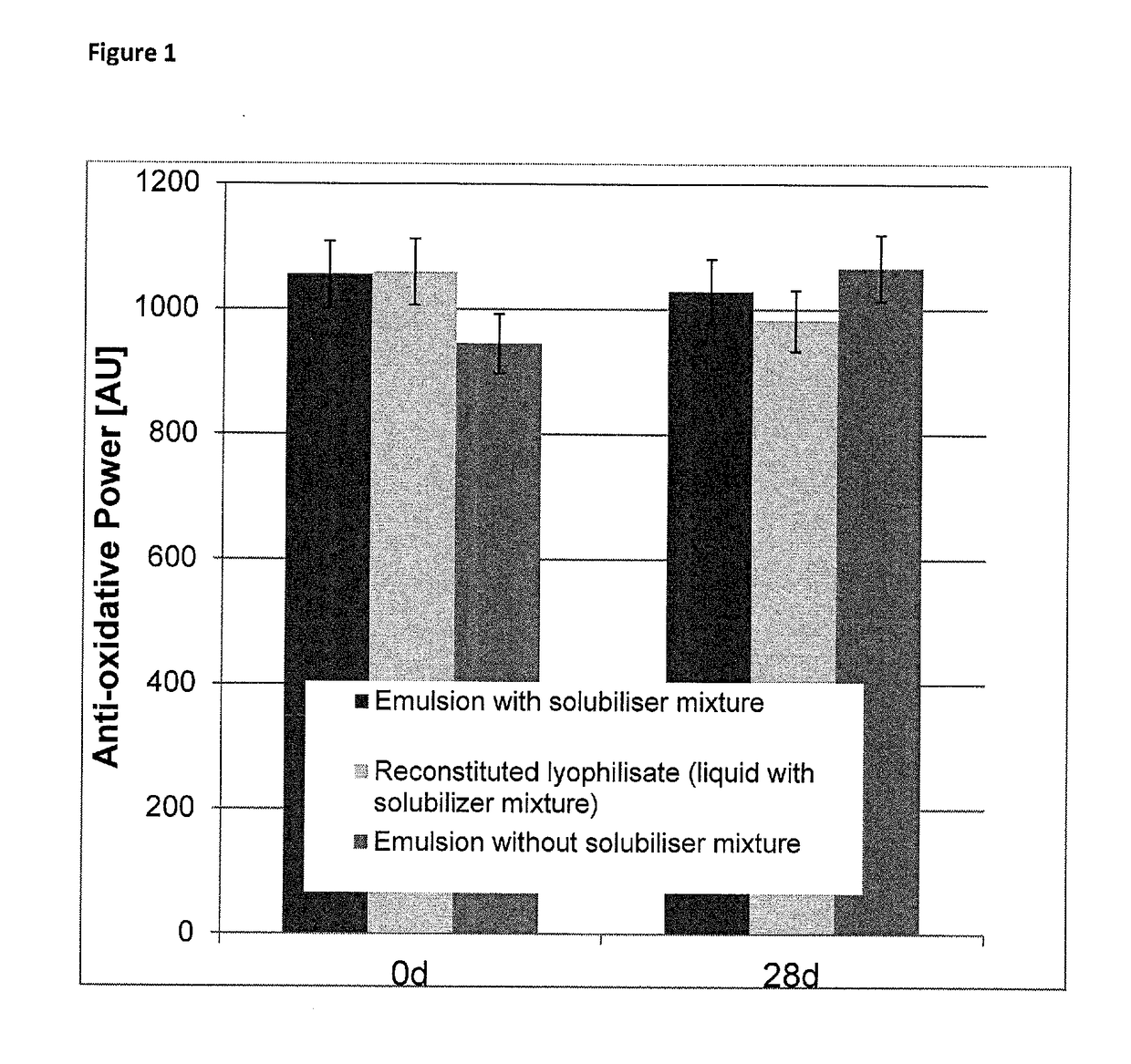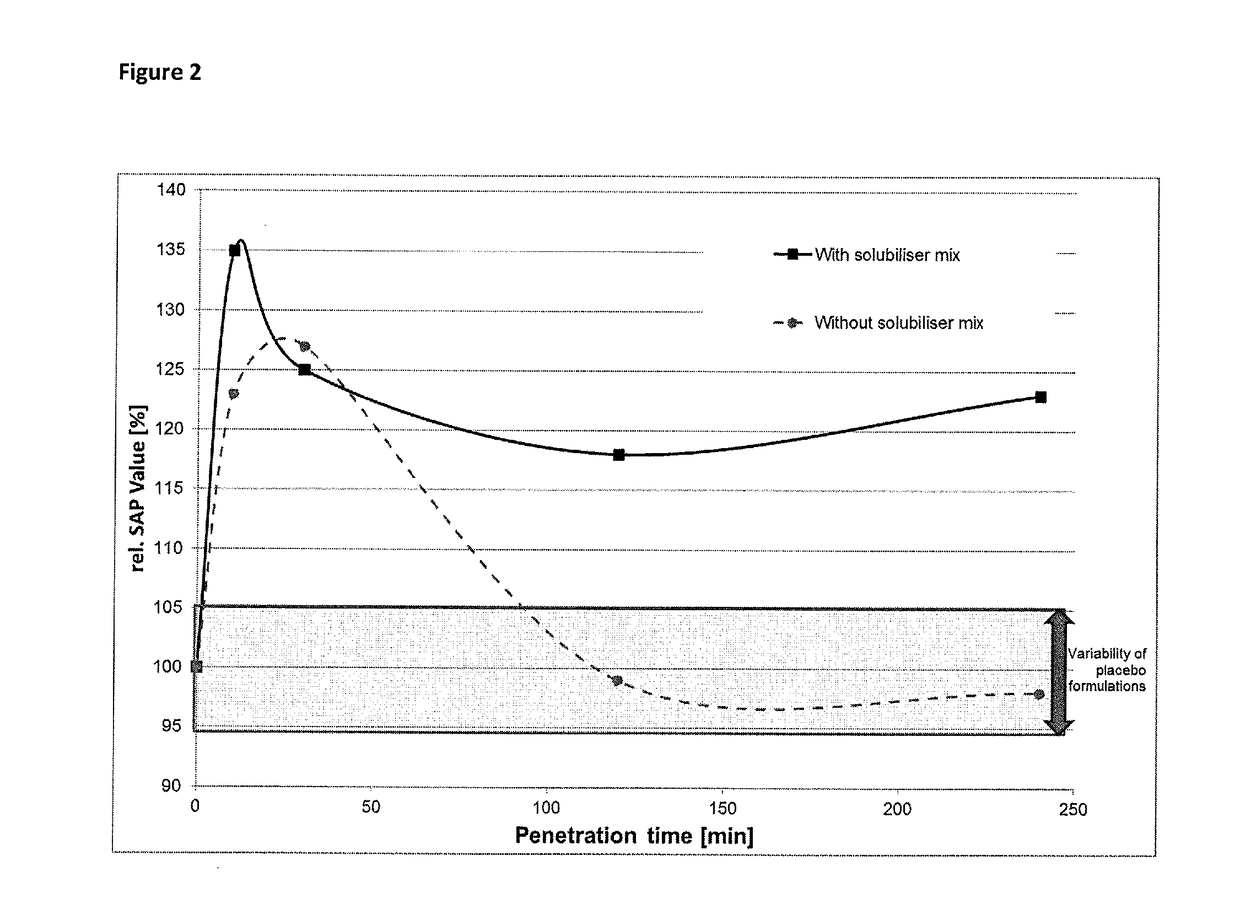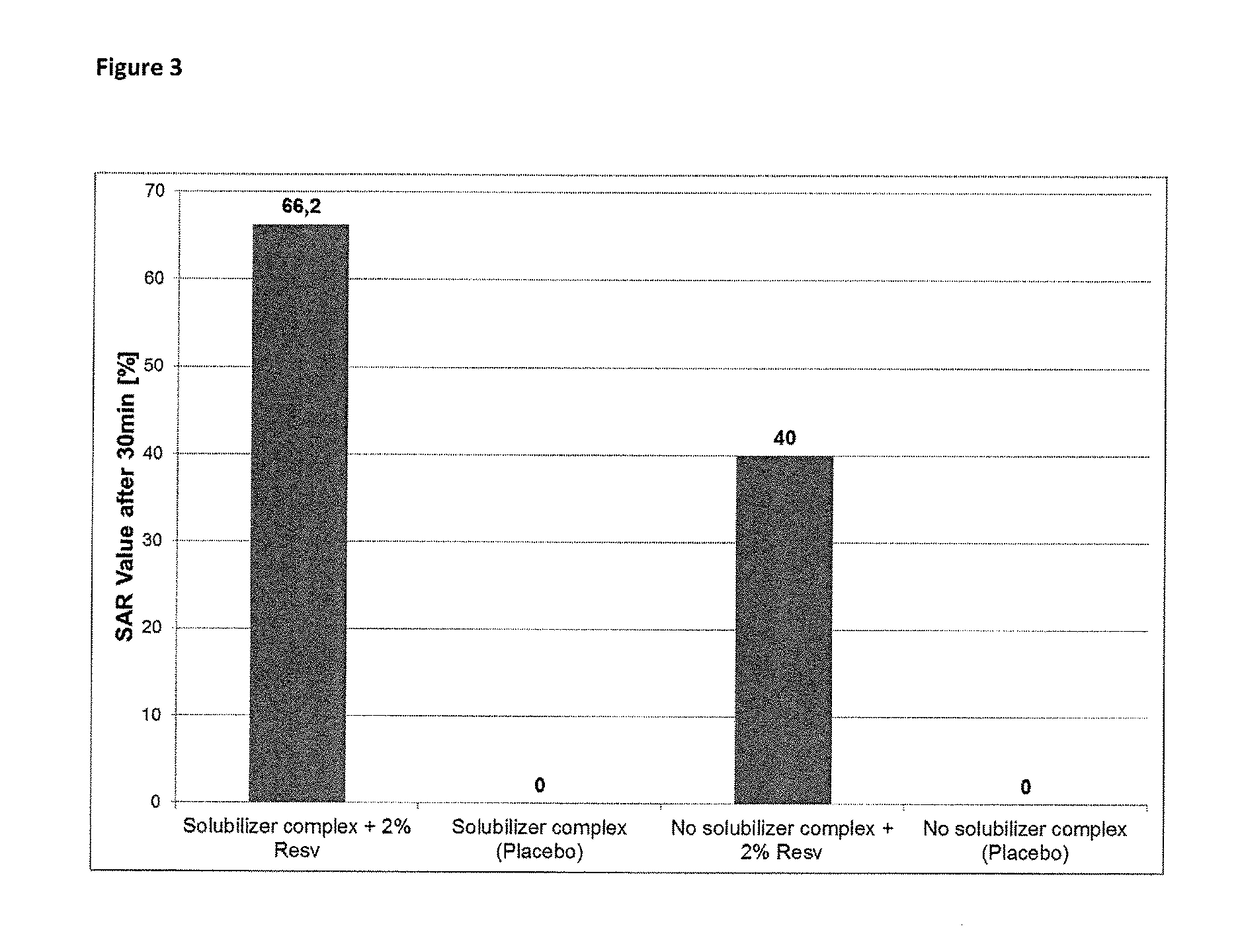Composition for topical application comprising dimethyl isosorbide, a polyol, and a phenolic or polyphenolic antioxidant
- Summary
- Abstract
- Description
- Claims
- Application Information
AI Technical Summary
Benefits of technology
Problems solved by technology
Method used
Image
Examples
example 1
Phenolic and Polyphenolic Antioxidant Solubility Experiments
[0107]In their endeavour to find suitable solutions to solubilise phenolic and polyphenolic antioxidants, with low amounts of each individual solvent the inventors tested the solubility of resveratrol and ferulic acid in pure solvents and in different mixes of water and solvents (hereafter called solubiliser mixes, mixtures or complexes)
[0108]Concretely, 10 ml of a pure solvent or a solubiliser mixture were stirred in a beaker at ambient temperature. An amount of 2 mg phenolic or polyphenolic antioxidant was dispersed in the mixture and stirred. If the mixture became clear, the addition of phenolic or polyphenolic antioxidant was repeated until the mixture remained turbid even after stirring for 10 min. The maximum solubility was calculated as a percentage by mass (wt %) based on this experiment.
[0109]The results for the solubility of resveratrol and ferulic acid in pure solvent (75 wt % for panthenol) are shown in table 1....
example 2
[0115]Preparation of Emulsions Containing a Phenolic or Polyphenolic Antioxidant with or without a Solubilising Mix
[0116]In order to assess whether the increased solubility of the polyphenol in a solubiliser mix translates into higher activity of the phenolic or polyphenolic antioxidant, emulsions comprising a phenolic or polyphenolic antioxidant (in this case ferulic acid or resveratrol) with and without a solubiliser mix were prepared. The final concentrations of the solvents in these emulsion are 10 wt % dimethyl isosorbide, 10 wt % 1,5-pentanediol and 1 wt % panthenol.
[0117]Emulsion with ferulic acid or resveratrol, without the solubiliser mix:[0118]900 mg of high molecular weight hyaluronic acid (GfN / Contipro 3010, 1.5 MDa) was dissolved in 247 g of distilled water, heated to 80° C. and stirred by means of a 1 l vacuum mixing device at 1400 rpm and ambient pressure for 15 minutes.[0119]4.5 g Sepinov EMT-10 (INCI name: Hydroxyethyl acrylate (and) Sodium Acryloyl Dimethyl Taurate...
example 3
Emulsion Stability Testing
[0139]The stability of the emulsions is thermally tested using a programmable climate chamber (Binder KBF 240) performing 24 hour climate changes from −5° C. / 0% relative humidity to 40° C. / 75% relative humidity.
[0140]Samples were transferred into 10 ml glass vials. Emulsions were tested for 30 days and visually inspected daily. All emulsion systems described in example 1 and two remained visually stable for the 30 days of the trial.
PUM
| Property | Measurement | Unit |
|---|---|---|
| Fraction | aaaaa | aaaaa |
| Fraction | aaaaa | aaaaa |
| Fraction | aaaaa | aaaaa |
Abstract
Description
Claims
Application Information
 Login to View More
Login to View More - R&D
- Intellectual Property
- Life Sciences
- Materials
- Tech Scout
- Unparalleled Data Quality
- Higher Quality Content
- 60% Fewer Hallucinations
Browse by: Latest US Patents, China's latest patents, Technical Efficacy Thesaurus, Application Domain, Technology Topic, Popular Technical Reports.
© 2025 PatSnap. All rights reserved.Legal|Privacy policy|Modern Slavery Act Transparency Statement|Sitemap|About US| Contact US: help@patsnap.com



